I would like to clarify some of the background information and motivation for my investigating the ability of a plasma scattering to produce cosmological redshift. It is the anomalies in galaxy surveys that first suggested that high temperature plasma gases in galaxy clusters are behind the phenomena. It is the intense centralization of distributions of plasma density, temperature and pressure characterized by the double beta model together with discoveries of the effect of relativistic forward scattering that form a basis for an alternative cosmological model. Galaxy cluster cells are the building blocks of the universe. How they arrange themselves requires a model of their space occupancy to account for fixed banding of galaxies in surveys. We will address that in a subsequent post.
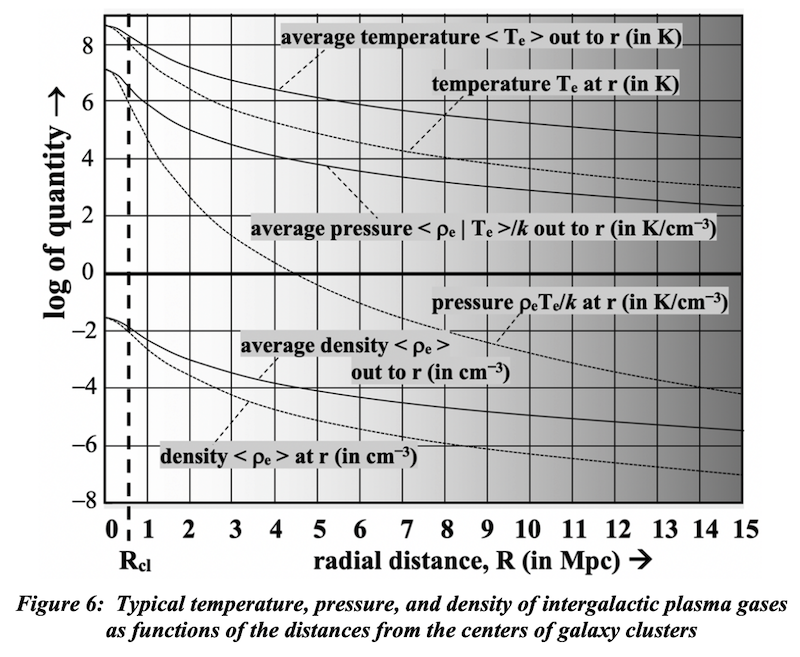
Aware of ‘fingers of God’ (FOG) phenomena that give smaller scale galaxy surveys a suspect aspect of anthropomorphism, I was skeptical of the unreasonable ‘dark matter’ explanation requiring excessive amounts of added (but invisible) matter to produce the phenomena with the simple Doppler interpretation. That was motivation for looking into plasma a scattering interpretation of cosmological redshift that also accounts for the FOG phenomena.
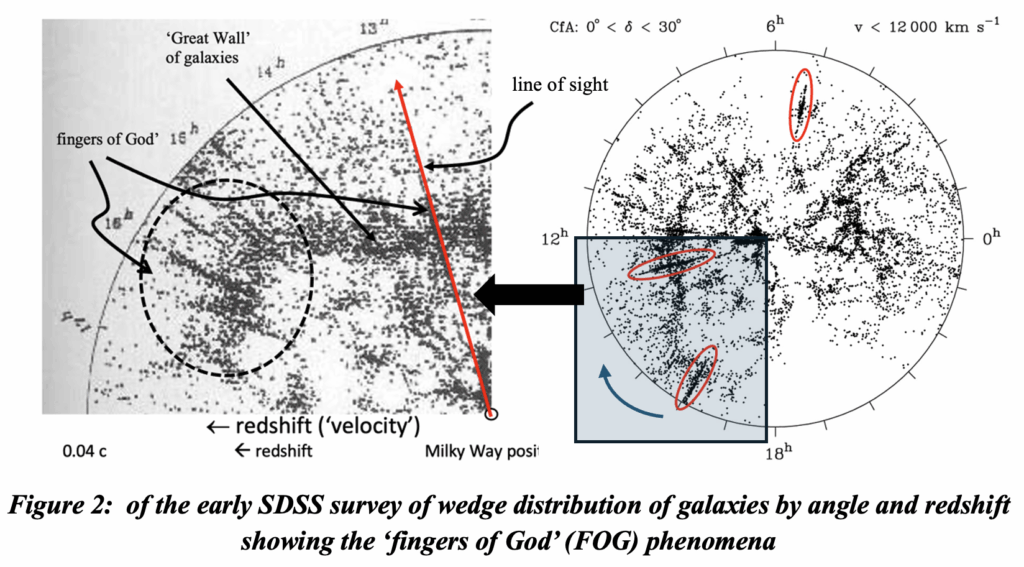
Aware of ‘fingers of God’ (FOG) phenomena that give smaller scale galaxy surveys a suspect aspect of anthropomorphism, I was skeptical of the unreasonable ‘dark matter’ explanation requiring excessive amounts of added (but invisible) matter to produce the phenomena with the simple Doppler interpretation. That was motivation for looking into plasma a scattering interpretation of cosmological redshift that also accounts for the FOG phenomena.
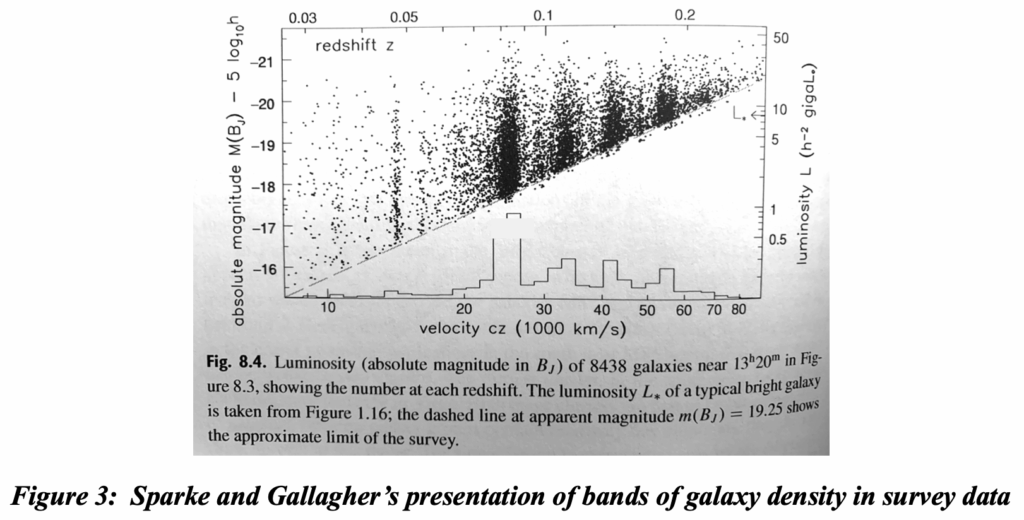
The 2dF survey from which they extracted the chart does demonstrate the appearance that there might be periodicity in the data, but the survey data shown by Blanton et al. (2003) is much more convincing. Treating visibility/luminosity issues in the ripple data references their figure 1.16 for why lower luminosity galaxies are systematically missing from their chart, shown as figure 5.
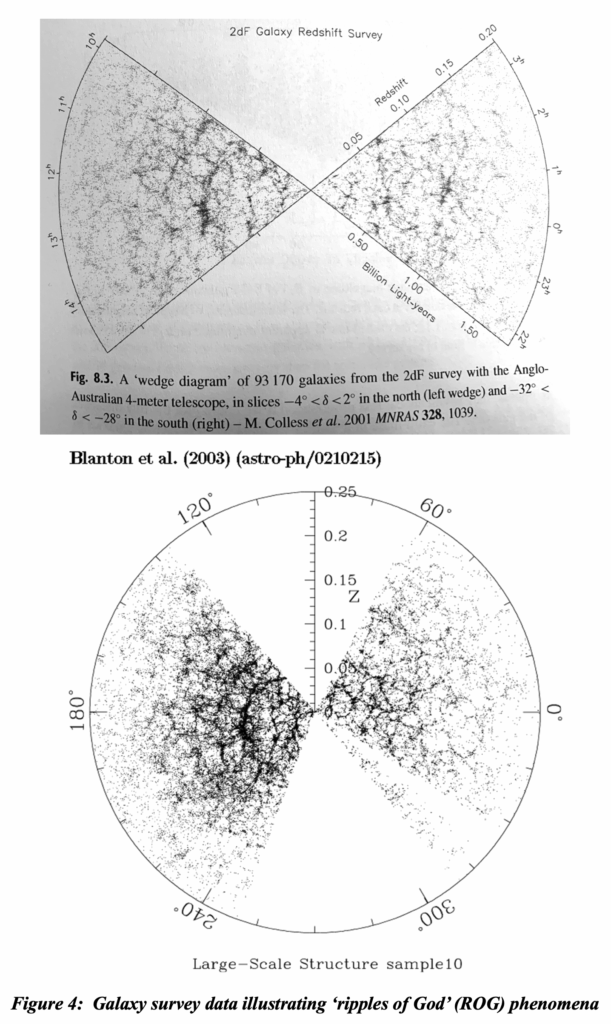
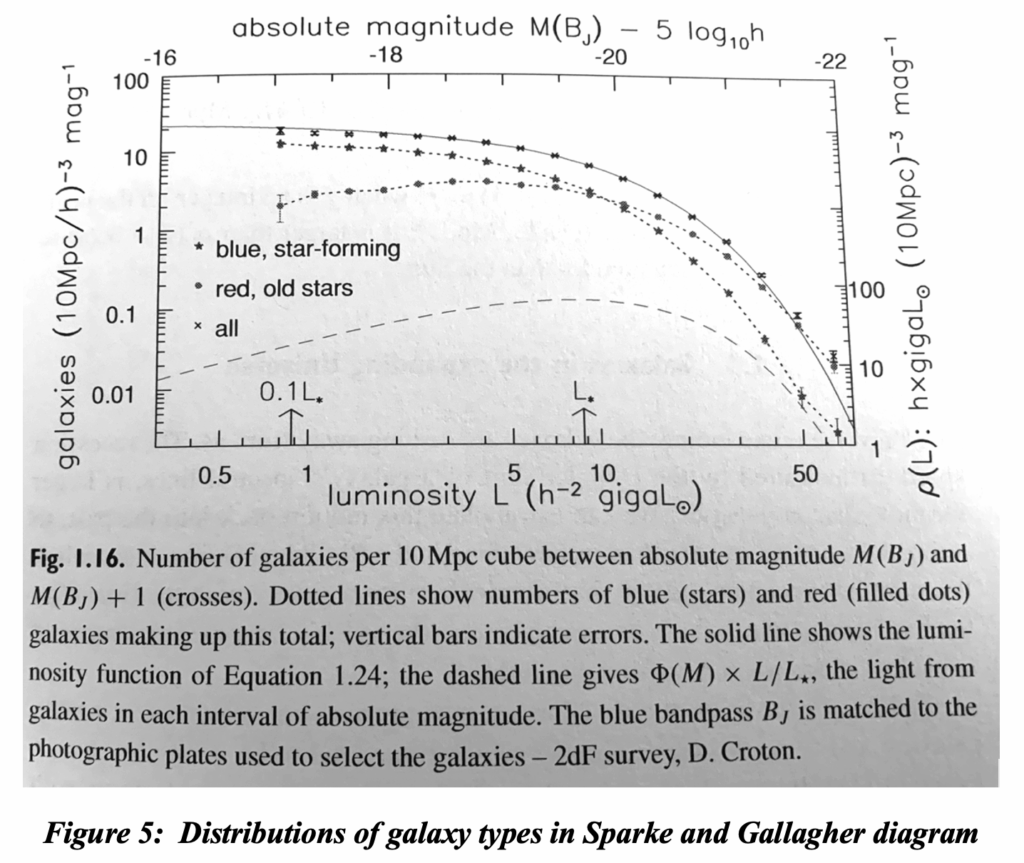
Selection of a model size of galaxy clusters came from White, et al. – specifically from their figure 4 below, where even at large redshifts 20 Mpc radii for clusters was prevalent. And the same degree of lumpiness persists for redshifts beyond unity as shown in the VIPERS data.
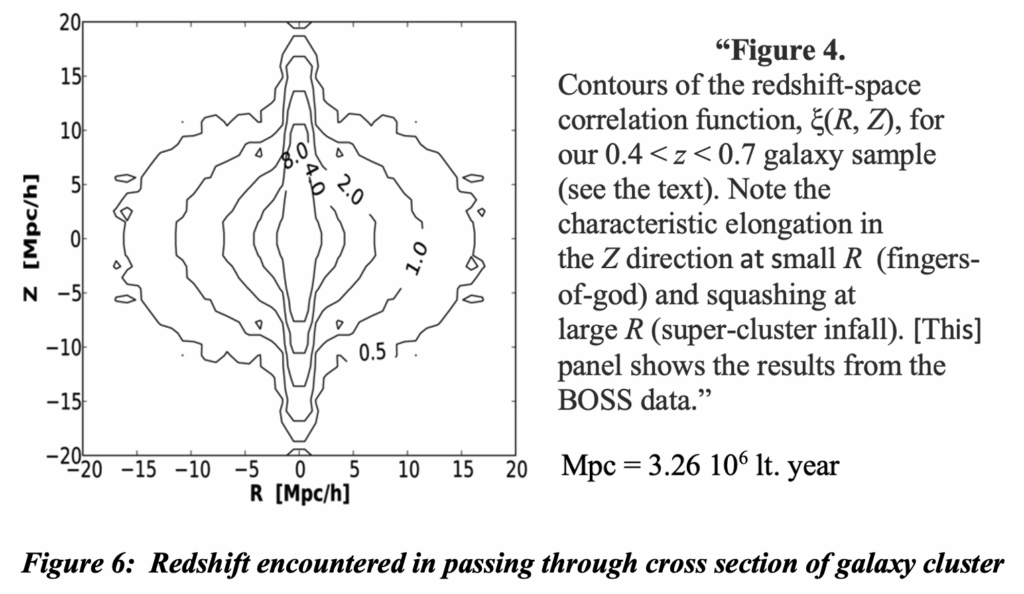
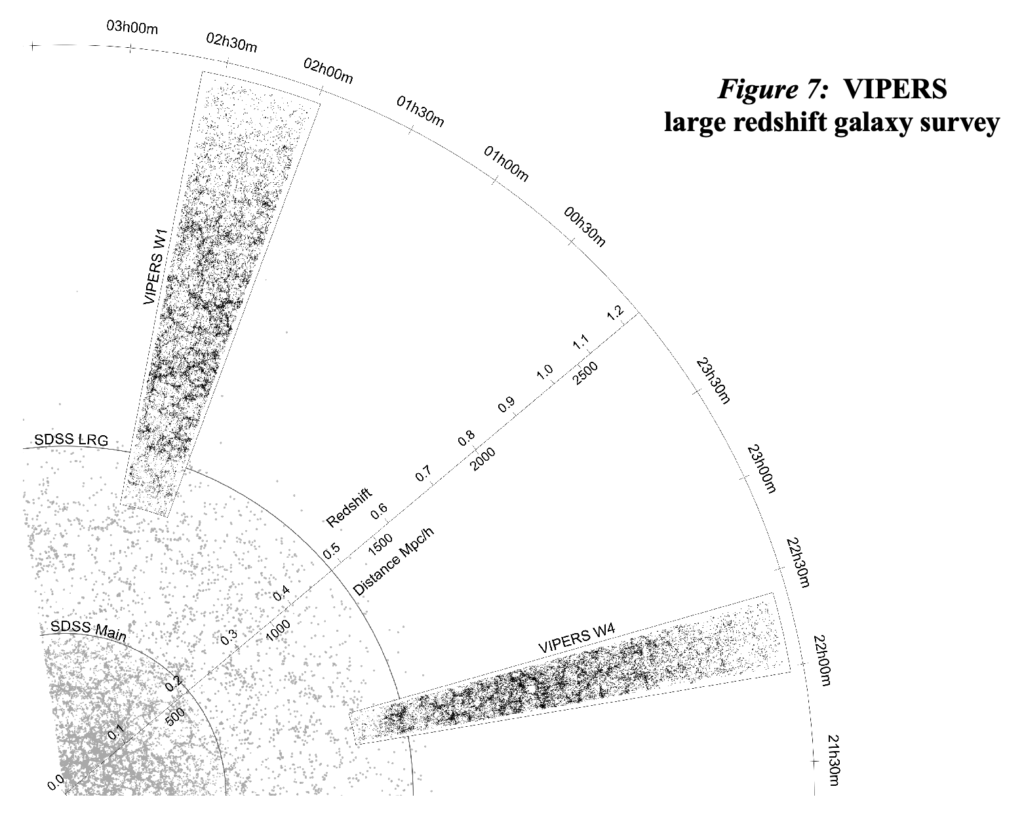
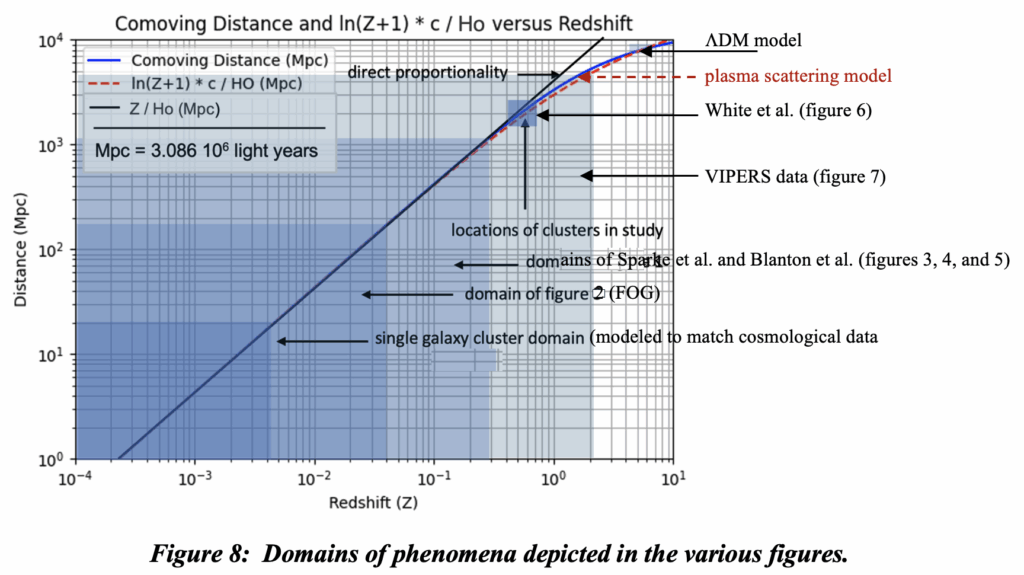
I have presented thought provoking images that have defied completely coherent rationalizations to justify continued allegiance to the standard cosmological model. I maintain that summoning invisible matter to justify the interpretation of extreme spectroscopic redshift of galaxies in clusters is irrational. That same impression applies to summoning ‘dark energy’ as required to accelerate the universe in order to get it to fit the LCDM magnitude-redshift curve to SN1A data at redshifts beyond unity. This is all from the same mind sets that opted for a big bang and an unimaginable expansion rate of an early universe rather than attribute the spectroscopic data to optical phenomena. There seems to be some underlying preference for their to be some object, however massive or powerful to account for what should be straight-forward phenomena.
Leave a Reply